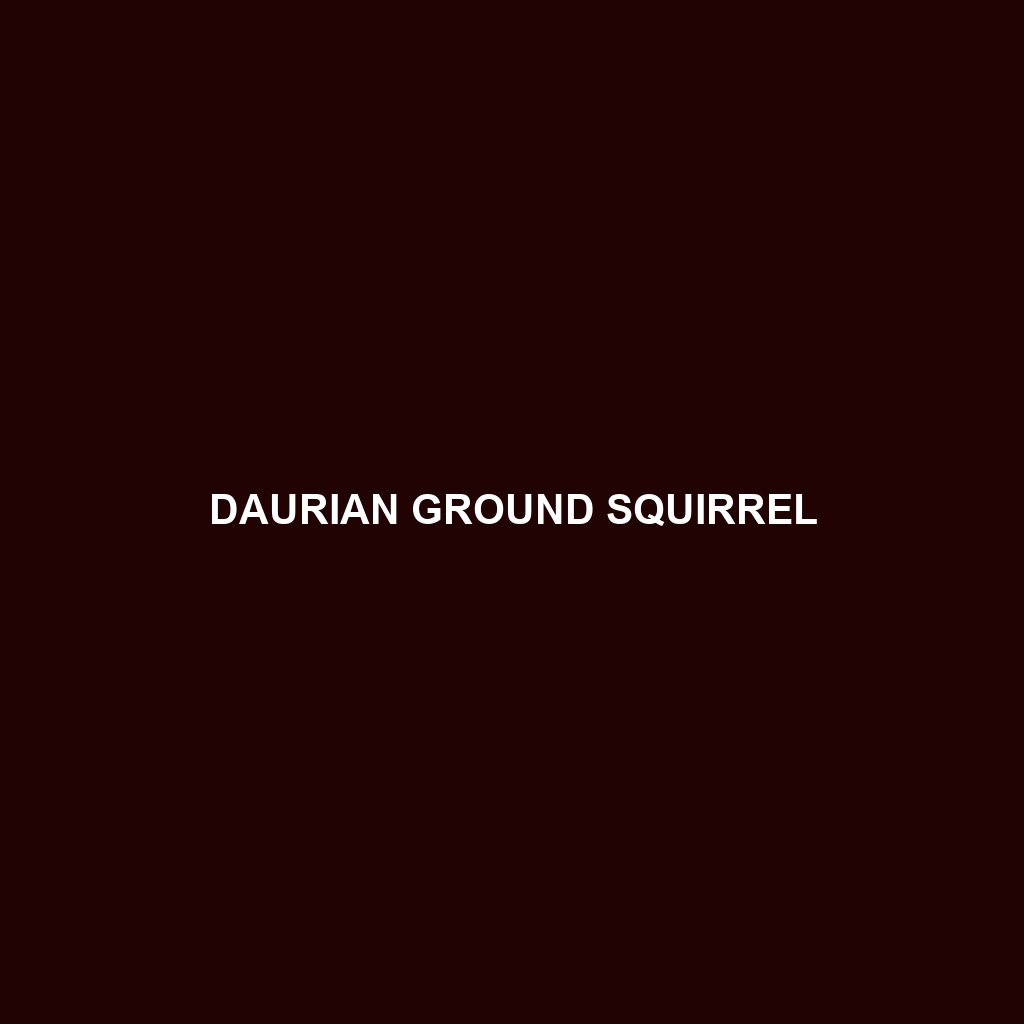Daurian Ground Squirrel
Common Name: Daurian Ground Squirrel
Scientific Name: Citellus dauricus
Habitat
The Daurian Ground Squirrel is primarily found in the grasslands and steppes of Central Asia, particularly in regions of Mongolia, Kazakhstan, and parts of northeastern China. These squirrels thrive in open, dry environments, often favoring areas with sparse vegetation that allows for easy burrowing and foraging.
Physical Characteristics
The Daurian Ground Squirrel is a medium-sized rodent, measuring approximately 25 to 30 centimeters in length, with a bushy tail contributing an additional 7 to 10 centimeters. Their fur exhibits a light brown to gray coloration with distinctive dark spots along their backs, providing effective camouflage against the ground. Notable features include short limbs and large, expressive eyes adapted for their active lifestyle.
Behavior
Daurian Ground Squirrels are known for their burrowing behavior, creating extensive underground tunnel systems. They are diurnal, meaning they are active during the day, primarily foraging for food and engaging in social interactions within their colonies. Their social structure often involves a communal approach to living, with families residing in close proximity to one another.
Diet
The diet of the Daurian Ground Squirrel primarily consists of grasses, seeds, and roots. They are also known to consume insects and other small invertebrates, particularly during the summer months when food is abundant. Their foraging habits are crucial for maintaining the health of their grassland habitat, as they help control plant growth.
Reproduction
Daurian Ground Squirrels have a breeding season that typically occurs in late spring, with females giving birth to litters of 4 to 10 offspring after a gestation period of about 25 days. The young squirrels are weaned at around six weeks and are known to remain with their mothers for several months before becoming independent.
Conservation Status
Currently, the Daurian Ground Squirrel is classified as “Least Concern” by the IUCN Red List, although habitat loss due to agriculture and urban development poses potential threats to local populations. Monitoring efforts are in place to ensure their populations remain stable.
Interesting Facts
One fascinating aspect of the Daurian Ground Squirrel is its ability to enter a state of torpor, which allows it to conserve energy during extreme weather conditions. Additionally, these squirrels are known for their vocalizations, which include a variety of chirps and whistles, used for communication among colony members.
Role in Ecosystem
The Daurian Ground Squirrel plays a significant role in its ecosystem by serving as both a herbivore and a prey species. Their foraging activities help disperse plant seeds, contributing to the health and diversity of the grassland ecosystem. Furthermore, they are an important food source for various predators such as birds of prey, foxes, and snakes, highlighting their integral role in the food web.
